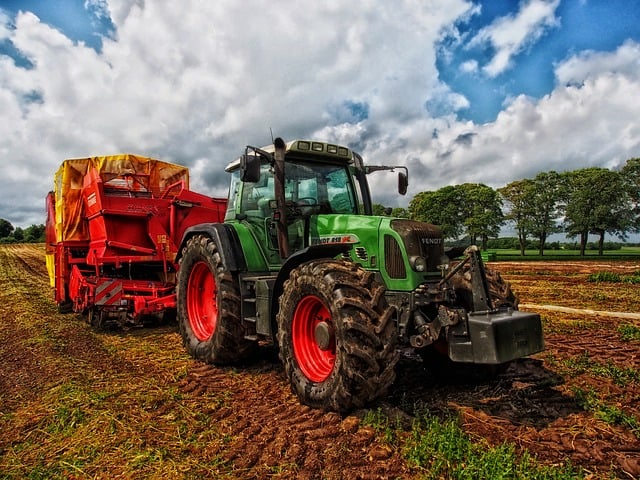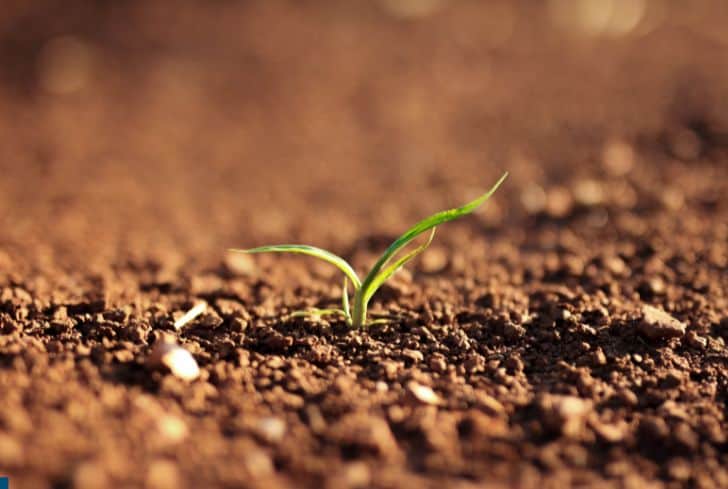Permaculture Farming: Definition, Principles and Examples

Permaculture is a set of design principles, centered along with the whole system of thinking, stimulating, and directly utilizing the pattern and all the resilient features that are observed in the natural ecosystem. It uses the principles in growing a number of fields from the regenerative agriculture, community resilience and also rewilding.
Permaculture agriculture is simply a process of farming that works in tandem with natural forces like wind, sun, and water that provide food, shelter, and water. By this method, the fruits are grown close to the consumers so that the waste can be brought back to the farmland easily. The distance between the consumer and farmland is thereby reduced. Also, it empowers people to grow their own produces, minimizing their dependence as consumers. Besides, it is based on three important pillars, i.e., care for the earth, care for people, and sharing of available resources.
The concept of permaculture was initiated by Bill Mollison in 1970. A professor of Tasmania University and an Australian ecologist, Bill spent many years out in nature and also as a wildlife biologist. He became distressed by the environmental conditions surrounding him, and then started experimenting on how to conserve the ecosystem.
12 Principles of Permaculture Farming
Permaculture farming generally works on 12 principles. They are:
1. Interacting and observing
Considering a particular permaculture design and layout, it works with nature to take advantage of self-replenishing elements.
2. Catching and storing energy
It gathers offsite energies to get converted to energy to be stored and used due to the natural cycle.
3. Obtaining a yield
Every element participating in a permaculture system are so designed that aid in obtaining a yield including food, water, shelter etc.
4. Applying self-regulation and accepting feedback
The captured energy is used for multiple purposes including maintenance, supporting downgraded providers, and contributing towards improving the overall system.
5. Using renewable resources
The use of renewable resources ascertains there is a greater amount of energy returned than applied.
6. Producing no waste
Permaculture is always governed by reduce, reuse, and recycle factors of sustainability.
7. Thorough designing from pattern to detailing
It is important to consider all patterns including light, temperature, space, time, seasons, etc, to get a clear idea about everything before executing the system.
8. Integrating rather than segregating
Every included element must be multitasking subject to its location.
9. Relying on small but slow solutions
Utilizing time both as a participating element and benefit and allow species to integrate naturally and slowly.
10. Capitalize on diversity
Elements can support the system needs in different ways as redundancy facilitates multiple reproduction methods.
11. Value both edges and marginal
Give importance to species (deer, birds, etc.) that thrive in between two system margins(forest & clearing) while also considering the changes taking place at the edges.
12. Responding to change creatively
Be flexible and durable and responding to changes that are least expected or planned.
Elements of Permaculture Design
There are some basic elements of permaculture design which include:
- Integration of the design is important. Everything is integrated in a sustainable way.
- Relative location of the elements should be nearby. In fact, there should be a symbiotic relationship.
- The planning of energy must be directed towards saving. Water can be obtained in various ways, and it has to be alternated so that they don’t exhaust.
- Self- sufficiency is one of the many points that permaculture emphasizes. It is because the self-sufficiency environment escalates financial stability.
- The practice of permaculture is based upon solidarity and co-operation. All the projects are team performance, and therefore, it’s not only an individual profit.
- It leads to local development. However, being independent and its ability to generate an economy will help boost development at any corner of the earth.
- Taking care of the earth and increased food production is a very important aspect of permaculture.
- Supply with renewable energy can be an additional fact that lures agriculturists adopt this method.
Examples of Permaculture
Let’s understand better how permaculture, which is a holistic approach, has actually helped the world in competing for food cultivation independently. Different places on earth practice permaculture differently and also prioritize encouraging the method that ultimately benefits communities across the globe.
1. Ferme Miku Valley Farm
Miku, located in Eastern Ontario, Canada, has a successful demonstration and educational site as well. The 68 acres of land, is home to small livestock and other expanding markets, including food forest development. They welcome the WWOOFers almost three times a year, helping them promote the permaculture practice along with gaining hands-on experience.
2. Findhorn Ecovillage
This community and education center is a dedicated experiment of conscious living. Located on the western coast of Scotland, United Kingdom, the foundation is rightly called a sustainable project in regards to the community, social-economic, as well as in spiritual terms. It also offers a comprehensive design course to provide training on principles, practices, and the application of permaculture.
3. Green Beat Farm
Green Beat, located in Tulum, Mexico, is a productive, demonstrative, and educational farm based on the principles of permaculture. The farm grows vegetables and microgreens, particularly for local restaurants. The main crops here include broccoli, arugula, mustard greens, chard, and kale.
4. Habiba Organic Farm
This farm, located in Nuweiba, Egypt, is actually an organic farm which facilitated converting the Bedouin settlement land to fertile land. The objective of the Habiba farmers is mostly experimenting with the farming techniques to help cultivate the Sinai Peninsula, which was previously difficult for growing viable crops. Thankfully, Habiba has successfully introduced a number of crops that can thrive in desert conditions.
5. Happy Food Farm
The farm is based in Nanning, China, which grows fruits, flowers, vegetables, and also some breeds of chicken and fish. The farm is a self-sustained one, growing fruits, and vegetables. The farm emphasizes the practice of permaculture and imparts education to the locals.
6. Laikipia, Kenya
Laikipia is a place in Kenya and also an institute that emphasizes permaculture, land regeneration, water harvesting, soil fertility, and methods of controlling soil erosion and integrated farming. It would promote food security, help combat the effects of climate change while at the same time, make the Masaai women clan independent. They are open to an internship program where agriculture students try hands in practical.
7. Permaculture Association of South Australia (PASA)
PASA, a non-profit organization situated in South Australia, primarily emphasizes promoting, practicing, and of course, represents the face of permaculture practice of Australia. The various permaculture ethics they emphasize include – caring for the earth, caring for the people, fair distribution of resources, and limiting consumption. They provide an excellent means for connecting the local groups and find more about projects in South Australia.
8. Permaculture in Ukraine
Permaculture is practiced in Ukraine by some enthusiasts who mostly try it at home. Since it’s a self-sustainable project, the individuals practice the same and share their experience with others. They thus help grow their produce, food, and livestock at the same time. Moreover, they use the wastes from the livestock as fertilizer for the vegetable field.
9. Permaculture at Anjuna, India
The place is located in Goa, India. This project is all about creating a kitchen garden and food forest. Their motto was to generate the ecosystem through seasonal rainwater, ground recharging, livestock, and also humans. The procedure included planting five coconut trees, a couple of neem trees, and a couple of tall spindly legumes in a barren land, which has existed for the last 20 years and were burnt annually.
10. Permaculture at Senegal, Africa
This permaculture site was based at Sare Suma, Senegal. The project was implemented as per the request of a local Senegalese landowner in order to encourage sustainability and local growth in the area. The project primarily focusses on using an 11-acre land site for the purpose of demonstration and educating the fellow villagers. The system involves animals, water harvesting, tree plantations, permaculture guilds, developing and improving soil fertility to help promote the permaculture farming system.
11. Permaculture in Bali, Indonesia
Permaculture is also practiced in Bali, Indonesia. Various organizations and NGOs teach permaculture to the local communities that emphasize sustainable training. It usually delivers solutions, including disaster preparedness, emergency response, community recovery, and also building resilience through permaculture.
Advantages and Disadvantages of Permaculture
There are various advantages and disadvantages to the process of permaculture. Some of them are:
- The process allows a healthier society.
- Seasonal cultivation and consumption prevail in accordance with the real needs of the body.
- The resources come from the environment, so the initial costs are comparatively lower.
- For increasing the productivity of the land, now it’s not a necessity to use larger machines.
- Permaculture leads to improved health and accessibility to cultivable lands within reach of people.
The greatest disadvantages of permaculture process are high input of labor, high cost of labor and infrastructure, infestation by pests, and loss due to unpredictable circumstances. Lack of sound knowledge poses another reason why permaculture is a challenge to many growers.
However, with the growing popularity of permaculture farming techniques, the process of agriculture is getting revolutionized in the most convenient and user-friendly way. Moreover, the popularity of this method will no doubt influence irrigation and the ecosystem at large.
Resources:







